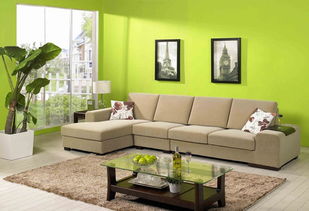家具英语翻译
Title: Preventive Measures for Furniture
Introduction:
Preventing damage to furniture is essential in maintaining its longevity and appearance. In this article, we will discuss some preventive measures that can be taken to protect your furniture.
1. Regular Cleaning and Dusting:
Regular cleaning and dusting are vital to prevent the accumulation of dirt, grime, and dust on your furniture. Dust particles can scratch the surface and cause longterm damage. Use a soft, lintfree cloth or a vacuum cleaner with a soft brush attachment to remove dust and debris. Avoid using abrasive cleaners or rough scrubbing tools that can harm the furniture's finish.
2. Avoid Direct Sunlight:
Excessive exposure to sunlight can cause fading or discoloration of furniture. Position your furniture away from windows or consider using window treatments like curtains or blinds to filter out harmful UV rays. If it's not possible to avoid sunlight entirely, consider using UV protective films on windows or applying a protective coating on furniture surfaces.
3. Use Protective Covers and Pads:
On hightraffic furniture like sofas and chairs, using protective covers or pads can help minimize wear and tear. These covers act as a barrier against spills, stains, pet hair, and general soiling. Ensure that the covers fit properly and are easy to remove and clean. Additionally, utilize coasters or placemats under glasses, plates, and other objects to prevent scratches, heat marks, or water damage on wooden surfaces.
4. Proper Handling and Lifting:
When moving or rearranging furniture, ensure that you lift it correctly to avoid strain or damage. Consult the furniture's user manual for specific instructions on handling and assembly. Use proper lifting techniques, such as bending at the knees and keeping your back straight. Avoid dragging furniture across floors, as it can cause scratches or damage to both the furniture and the flooring.
5. Maintaining a Stable Environment:
Extreme temperatures, humidity, and fluctuations in moisture levels can adversely affect furniture. Maintain a stable indoor climate by using humidifiers or dehumidifiers to control humidity levels as appropriate for your specific furniture materials. Additionally, avoid placing furniture near heat sources like radiators, fireplaces, or direct vents, as the excessive heat can cause warping or drying of the wood.
6. Pet Protection:
For pet owners, it is crucial to take extra precautions. Train pets to avoid scratching furniture by providing them with appropriate scratching posts or pads. Use petfriendly furniture covers to protect against stains or pet hair. Regularly trim your pet's nails to minimize the risk of accidental scratches or punctures.
7. Professional Maintenance:
Periodic professional maintenance can significantly extend the life of your furniture. Consider hiring professionals for services like upholstery cleaning, wood polishing, or leather conditioning. They have the expertise and right tools to handle different furniture materials effectively.

Conclusion:
By implementing these preventive measures, you can significantly reduce the risk of damage to your furniture and ensure its longevity. Regular cleaning, protection from sunlight, proper handling, maintenance of a stable environment, pet protection, and occasional professional care are key elements of effective furniture maintenance. Remember that each type of furniture material may require specific care, so consult manufacturer guidelines for optimal maintenance practices.





